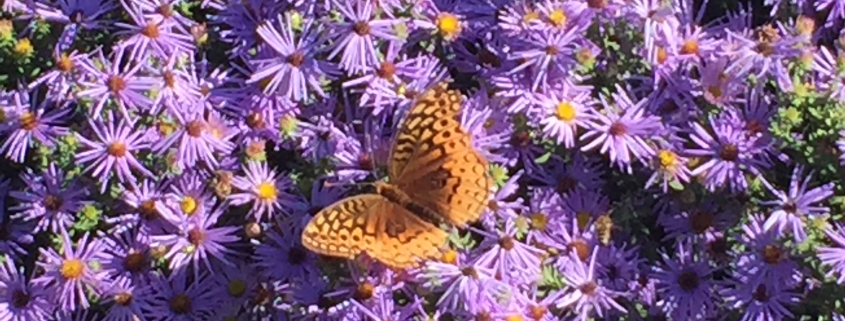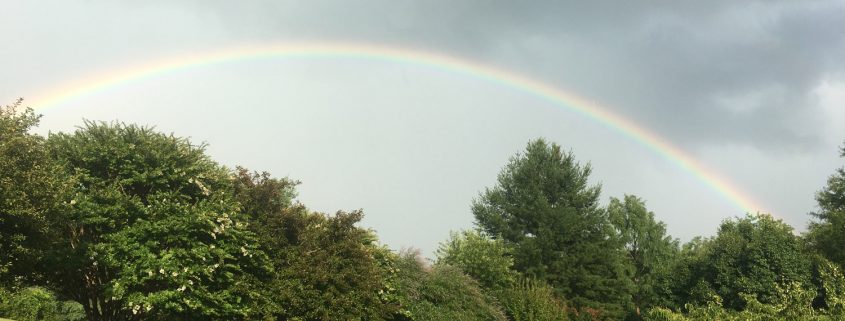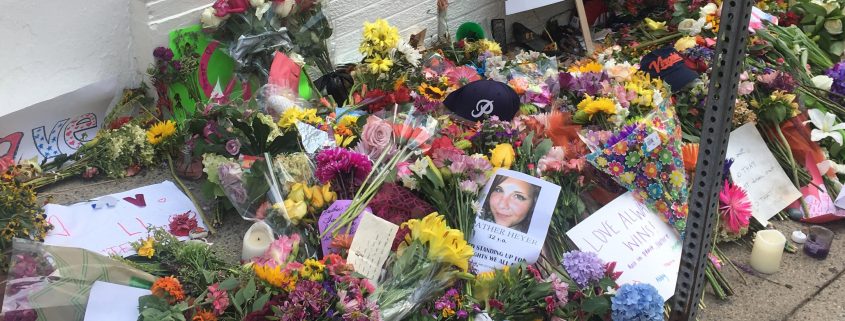To the class of 2020, congratulations on graduating during the worst healthcare challenge our world has faced in over a century, one that has fully disrupted our lives and ordered the whole world to “stay home” for months on end.
“Congratulations?” You might ask.
No doubt the Covid-19 pandemic and associated economic shutdown have thrown a wrench into your expectations for how your years of hard work in school would come to a worthy conclusion.
Well, I agree that the challenge of graduating during the Covid-19 pandemic is a hardship, but, like all such hurdles, it might just prove to be a blessing in disguise. Graduation speeches are generally known as “commencement,” reflecting that they happen at the beginning of the rest of your life, not the ending of your education. Life can be challenging for any of us. The ability to find a silver lining as you commence the rest of your life under this apparent hardship of the viral lockdown is a worthy quest. In many ways, this Covid-19 pandemic might provide the most valuable experience of your entire education – a resilience to hardships, and an optimism that can counter whatever the world throws at you in the future.
By way of example, I would like to share the stories of four people who faced adversity and the unknown in their lives and consequently grew into much grander versions of themselves through the challenge. The adversity and uncertainty created the opportunity for each of them to magnificently fulfill their potential and make remarkable, lasting contributions.
In the 16th Century, humans looking up at the night sky knew that all of those sparkling points of light were in a fixed sphere high above the earth. A young Italian scientist, Giordano Bruno, who was a forward-thinking visionary, proposed that those points of light in the night sky might really be distant suns, possibly orbited by planets, even possibly inhabited by other intelligent beings. The church was intolerant of many philosophical and theological statements during the Inquisition, and Bruno was tortured and killed in 1600 by the forces that drove many to their imprisonment or death. He defended this cosmological vision to the end and refused to recant it. His demise did not destroy his vision. Only over the last three decades has science begun to fully catch up with his proposal, as the most powerful telescopic efforts to date, using mainly radial velocity measurements and transit monitoring, have identified over 4,200 planets orbiting distant stars, some even offering tantalizing spectroscopic clues that those planets might be favorable to life. Despite his ruthless execution, the courageous visionary legacy of Giordano Bruno lives on 420 years after his death!
In June, 1661, Isaac Newton began his studies at Trinity College, Cambridge, England working his way through by serving as a valet, until his studies were interrupted by a plague that swept through England. He had qualified for a scholarship that would cover not only his Bachelor of Arts degree, but also his post-graduate Master of Arts degree. In 1665, while still an undergraduate, he discovered the generalized binomial theorem, while pursuing the study of “mechanical philosophy.” Immediately after receiving his Bachelor of Arts degree in August, 1665, the university was forced to close as the Great Plague, the last wave of the bubonic (or Black) Plague, killed 100,000 people (fully one quarter of London’s population) over 18 months. Due to that pandemic, he had to study at home over the next two years waiting for the university to reopen. From his small home in Woolsthorpe, lacking the resources of a university library, he started developing his notions of optics, a universal law of gravitation, and he invented a whole new and vastly useful field of mathematics: the calculus! Not bad for a previously undistinguished college student. After two years of isolation due to the Plague, Newton returned to university and completed his Masters degree. Remarkably, Isaac Newton truly blossomed as a creative thinker during the isolation period, emerging as one of the greatest scientific minds in history after weathering the hardship of the academic shutdown.
Albert Einstein graduated from the Swiss Federal Polytechnic School in Zurich in 1900, but he was unable to secure a teaching position for two years. A family friend finally helped him get a job as a patent clerk, 3rd class, in the patent office in Bern, Switzerland. Luckily, his mundane work in that office left plenty of spare time for him to pursue his profound interest in physics. In 1905, as a 26-year old patent clerk, he wrote four monumental scientific papers, in a year that has since come to be called his “annus mirabilis,” or “miracle year.” Those four papers, published in the Annalen der Physik, went on to revolutionize the scientific world, creating a seismic shift in understanding that continues to expand today. The first paper addressed the photoelectric effect, ultimately a cornerstone of the newly-born field of quantum physics, specifically addressing how light beams eject electrons from a metallic surface. The second paper addressed Brownian motion, or the first direct proof of the existence of atoms, after over two millennia of their proposed existence. The third paper concerned special relativity, Einstein’s effort to reconcile problems of Newtonian mechanics with James Clerk Maxwell’s notions of electromagnetic fields, which led to the surprising linkage of space and time. The fourth paper of that truly miraculous year dealt with nothing less than mass-energy equivalence, his famous equation E=mc2, which ultimately led to the end of World War II through the development of atomic weapons in the Manhattan Project, a welcome result for all of humanity in its rapid ending of that deadly conflict that ultimately saved millions of lives. It was his paper on the photoelectric effect that led to his receipt of the Nobel Prize in Physics in 1921, although that by no means makes it the most scientifically important of the four papers. It was simply less controversial than his work on special relativity or mass-energy equivalence.
The world has never been as enthralled by a brilliant scientist as its was by Einstein. As early as 1919, when his predictions of the sun’s displacement of the apparent positions of stars near the sun during a total solar eclipse validated his concept of General Relativity, the global public was mesmerized and became caught up in his scientific successes, though few truly understood his work. Our very common use of global positioning systems, or GPS, is one very practical result of Einstein’s discoveries that has changed our lives from the drudgery of reading and interpreting maps to instant electronic positioning and routing in our travels. None of that would exist without Einstein’s theory of general relativity. As recently as 2017, the world was involved yet again in Einstein’s prescient brilliance: his prediction of gravitational waves in the theory of general relativity was beautifully confirmed by one of the most astonishing pieces of technology ever constructed by humans – the Laser Interferometer Gravitational-wave Observatory, or LIGO. Comprised of two huge laser interferometers (each with two orthogonal arms 4 km long), LIGO consists of one unit in Hanford, Washington, and the other 3,000 km away in Livingston, Louisiana. The astonishing ability of this set of observatories to distinguish signal from noise in analysis of gravitational waves would be equivalent to being able to measure the distance to the nearest star, Proxima Centauri, 25 trillion miles away, down to the accuracy of the width of a human hair!
Not bad for a patent clerk, 3rd class, with some extra time on his hands! Working in the Bern patent office in 1905, he did not have ready access to a scientific library (much less a resource like the internet!), but he had a wonderful colleague, Michele Besso, with whom to discuss his ideas. He first met Besso at the Polytechnic Institute and his family had helped Einstein obtain the position in the Bern patent office. Einstein gave specific credit to Besso in his paper on special relativity: he said he “could not have found a better sounding board for his ideas in all of Europe” than Michele Besso. Fortunately, today’s technology allows for Facetime and Zoom chats, and so that opportunity to chat with your friends should not be underestimated, pandemic or not!
Einstein remained lifelong friends with Besso, until he died in Geneva just over a month before Einstein’s own death on April 18, 1955. In a letter of condolence to Michele’s family, Einstein had written: “Now he has departed from this strange world a little ahead of me. That means nothing. People like us, who believe in physics, know that the distinction between past, present, and future is only a stubbornly persistent illusion.” Einstein’s grand understanding of the deep mystery of time itself as an illusion gave him comfort, and implied that death did not ultimately separate him from his lifetime friend at all, which leads us to the fourth and final revolutionary thinker.
Raymond Moody became fascinated by the idea of an afterlife after he read Plato’s account of an Armenian soldier, Er, that concludes his book, The Republic, written almost 2,400 years ago. Er was killed in battle, but his body did not decompose over ten days on the battlefield. Two days after collecting his body, he was placed on a funeral pyre, where, just before the planned ignition, he unexpectedly regained consciousness and regaled his astonished fellow soldiers with stories of travel through astral planes. This story stuck with Moody as he went on to obtain a PhD in Greek Philosophy from the University of Virginia in 1969, teaching briefly at East Carolina University before deciding he would prefer going to medical school and becoming a physician, like his father. In the mid 1960s, Moody met Dr. George Ritchie, a Virginia psychiatrist who had had his own profound experience returning from near-death as a 19-year old Army recruit in Fort Barkley, Texas, in December 1943.
Having read the story of Er, Moody’s mind remained open to the possibility of this life not being the entirety of conscious existence and accepted Ritchie’s story. Later, as a medical student at the Medical College of Georgia, his patients began telling tales of unexpected experiences occurring in the setting of severe injury or illness, that many would have been tempted to dismiss as hallucinations. Raymond, however, became intrigued by their consistencies and similarities, despite the wide variety of medical situations that induced them. The story recounted by Plato’s soldier Er would have fit right into this modern collection of patients! He documented over a hundred such cases, and assembled them into a landmark book, Life after Life, first published in 1975. He popularized the term “near-death experiences,” and is globally considered the father of the field. Despite his medical training, Moody’s open mind and his inquisitive curiosity allowed him to make connections where others had not.
Academic study of similar cases by scientists around the world now supports a far richer and more profound interpretation of their meaning, and of the implications for the nature of consciousness, indeed in many ways proof of the existence of the human soul. The modern study of consciousness includes the tremendous evidence for the reality of non-local consciousness, such as telepathy (sensing others thoughts and emotions), precognition (knowing the future), remote viewing or extra-sensory perception, psychokinesis (the manipulation of physical matter by the mind), and even past-life memories in children indicative of reincarnation. But the tip of the spear in demonstrating mind and consciousness independent of the physical brain remains firmly in the realm of near-death experiences and related studies.
Moody realized there was too much there to simply dismiss the claims of his patients as hallucinations, and his intuitions of the importance of these stories has proven most valuable. In the midst of the Covid pandemic, when our way of interacting in the world has been so affected, I encourage you to develop an open mind. Pay attention to the anomalies in life — just as Raymond Moody did. The history of science is filled with tremendous progress when people embraced the anomalies and outliers — the cases that just didn’t fit the standard model. Those jagged edges in our explanations offer seeds to a much deeper understanding of reality, as long as we are not tempted down the simple path of blind acceptance. Don’t just accept the beliefs of others – find out for yourself!
Prior to November 2008, I had heard plenty of fantastical stories from my neurosurgical patients whom I often patted on the back and reassured that it was just a drug effect or hallucination. I had followed a fairly conventional path of scientific education in pursuing my medical training so my mind was not as open as Raymond Moody’s — that is, until I found out for myself when I came down with an absolutely should-have-killed-me case of gram-negative bacterial meningo-encephalitis. I spent a week in coma due to a disease that medical documentation later revealed had decimated my neocortex, that’s the part of the brain most directly related to human consciousness. While my brain was unable to produce a hallucination, I witnessed an extraordinary spiritual journey that was much more real than anything I’d ever experienced in my life. When I finally struggled my way back to this world, I had such complete amnesia for my life that I did not even recognize loved ones at the bedside, like my sisters, sons and even my mother. Although my physicians had predicted the dire destruction of my illness, they were unprepared for my rapid recovery of function and memories over hours and days, not to mention my complete return to normal over two months or so.
After reviewing my medical records, it was clear to me that our notions of the brain’s role in creating consciousness were false. In fact, it’s the other way around: consciousness is a fundamental property of the universe, and the brain merely serves as a filter for consciousness, our very awareness. Since this realization, I have discovered over a hundred scientists around the world pursuing research that fully supports this scientific concept. When this maturation of understanding becomes more prevalent in our mainstream world, the potential for unprecedented progress is inevitable. A horrific health challenge, so devastating to my family as they lived through it, has become one of the greatest blessings of my life! Talk about a silver lining!
Of course, mine is but one of many stories that validate a much grander model of understanding our reality, because we are each on a journey of personal growth and discovery, contributing to the evolution of consciousness itself.
Each of you will have your own story. Your education has always been about learning how to learn, and your final exam in this course of study involves the challenges of the pandemic and the economic distress that comes with it. Yes, the abrupt end of the school year left much of your course work completed online as opposed to physically present, making it seem less complete. Many aspiring athletes had their senior dreams of competition smashed by the pandemic and its forced social distancing.
However, the potential is there for you to grow stronger through direct experience – to become more resilient. If your “learning how to learn” was on track by the time the pandemic ended the normalcy of the school year, then the challenge taught you lessons about adapting to change, learning to navigate a new normal, and seeing yourself as a more mature and capable soul. Hardship naturally breeds resilience. As 19th century German philosopher Friedrich Nietzsche so wisely observed, “That which doesn’t kill us makes us stronger.” Clearly true in the case of near-death experiences, this maxim applies to life for all of us.
Our greatest rewards come from contributing to the common good. As we grow and learn, we come to appreciate the simple gratification of being of service to others. The Covid-19 pandemic provides an opportunity to help others, especially those at the lower end of the socioeconomic spectrum who were marginal before the pandemic, but now are dangerously exposed as our thin safety net for the have-nots is challenged by the extremes of the pandemic.
The great gift of this unexpected ending to your academic studies is your learning that when the world gives you sour lemons, make lemonade!
Remember that many of the assumptions and beliefs hosted by our world are falsely limiting. You are more than just your thoughts, more than just your ego, much more than just your physical body and brain. The only limits are those propped up by those beliefs, but you have the power to prove them wrong. As Einstein so wisely observed, imagination is far more important than knowledge. Consider the possibilities limitless, especially when it comes to helping others and contributing to the higher good and your contributions will be everlasting.
Congratulations, indeed, on your hard work, your disciplined study, your attention to cultivating friendships and your personal network, and especially on coming to see yourself as a contributing citizen of the world – the steel of your soul tempered in the cauldron of the covid pandemic. Finding strength in the dark cloud of this lockdown will truly provide a gift that will last a lifetime.
Thank you.





